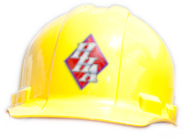What is indoor air quality (IAQ) and why is it important in your work environment? When thinking of air quality, the first conclusion usually drawn is we are strictly speaking residential applications. Over the last decade, businesses, warehouses, and even hospitals are now understanding the importance of cleaner air in their work environment.
Pollution in the indoor environment can come from dust particles, chemical pollutants, or from things like bacteria and mold. Even office equipment such as printers, computers, and photocopiers can also cause air pollution. If your workplace is undergoing any type of maintenance or construction, your IAQ will suffer. Even your coworkers bring in contaminants through viruses, perspiration and dander from pets.
So why have cleaner air in the office? What is the importance of air quality in an office, hospital, warehouse or even a casino?
Less Sick Time Means More Vacation Time
Sick days are a given (most of the time). We’ve all been there; one person brings in the dreaded cold and before you know it, the entire office is infected. Did you know by purifying your air you can actually reduce viruses and bacteria within the air stream?
No one can be at full productivity while battling a runny nose and a pounding headache. Health issues in employees cause an increase in medical leaves and absenteeism, bringing down the number of productive hours in an organization. The EPA reports that up to 150 million work days are lost each year as a result of poor IAQ, with productivity losses at $5 billion per year, and into the “tens of billions” in total losses.
With less sick employees due to a better indoor IAQ , employees perform better, they can use their vacation time for actual relaxation and they are able to “recharge” their batteries to prevent becoming burnt out. Employees then come back refreshed, renewed and ready to take on their projects. A healthy staff is a more productive staff.
The “Use Outdoor Fresh Air” Approach Does NOT Work
According to the EPA, ASHRAE (American Society of Heating, Refrigerating, and Air-Conditioning Engineers) offers an extensive downloadable IAQ guideline for indoor air quality in all types of spaces.
ASHRAE states when it comes to ventilation in certain buildings:
“The traditional means of dealing with IAQ is through ventilation with outdoor air, but this approach assumes that the outdoor air is cleaner than the indoor air. In many locations and for many contaminants, this is not the case, and insufficiently treated ventilation air can actually make IAQ worse.
Poor outdoor air quality includes regionally elevated outdoor contaminant levels, as well as local sources such as motor vehicle exhaust from nearby roadways and contaminants generated by activities in adjacent buildings. Some green building programs recommend across-the-board increases in ventilation rates, but such recommendations may be counterproductive in areas with poor outdoor air quality unless accompanied by appropriate and effective increases in filtration and air cleaning.”
Long Term Health Benefits
You can approach IAQ in multiple different ways, but air purifiers are by far the most effective way to breathe cleaner, fresher air in your home or office.
There is a specially engineered ionization technology that works to reduce the particulate count inside an office building or wherever installed. It works to reduce particulate 2.5 microns and smaller. Inhalation of particulate pollutants, especially 2.5 microns (PM2.5) or smaller, has been linked to increased risk for a number of adverse health effects.
Long-term exposure to elevated levels of PM2.5 is associated with premature death in older adults with heart or lung diseases, and reduced lung growth in children. Bi-polar ionization creates a plasma region help reduce the PM2.5 particulate count to provide healthier cleaner air inside the building.
Less Maintenance Than Other Options
You’ve taken the leap and decided to purchase an air purifying system. So which product is truly the best choice?
Common air purification technologies require ongoing maintenance with bulb/cell replacement every year or two. This technology uses a UV light to kill bacteria, mold, etc.; however, it does not fully kill these pathogens nor does it treat actual particulate in the air stream. The constant bulb replacements and ongoing maintenance makes the cost and ownership of the product undesirable.
The best option economically, and quality wise, would be an ion generating purification system, like the iWave-R.
iWave air purifiers use needle-point bi-polar ionization to create equal amounts of positive and negative ions.
When these ions are injected into the air stream, they break down passing pollutants and gasses into harmless compounds like oxygen, carbon dioxide, nitrogen and water vapor. When these ions come in contact with viruses, mold, or bacteria, they remove hydrogen molecules – without them, the pathogens have no source of energy and will die.
The ions also attach to allergens, pollen, and other particles causing them to band together and be caught by your ventilation system’s air filter or simply fall out of the air.
iWave air purifiers install in air conditioning and heating systems, producing no harmful byproducts (like ozone), and most models require no ongoing maintenance or replacement parts. With the iWave-R and iWave-C’s self-cleaning design, you can expect years of maintenance free performance.
IAQ in your office is an investment worth pursuing. Employees are healthier, happier and more productive when they are in a clean environment! With spring fast approaching, it’s the perfect time to reach out us at Harbin Heating and Air Conditioning and see how iWave can work for your office.
source credit: https://bit.ly/36JIB7R


